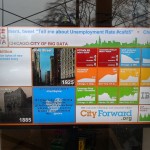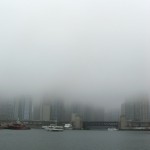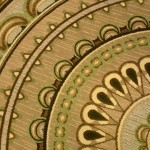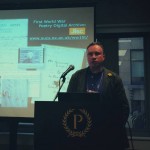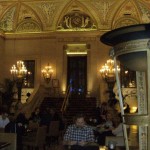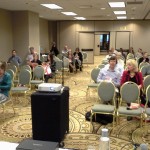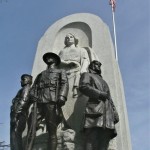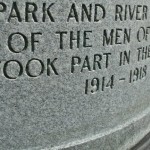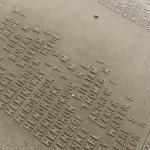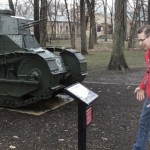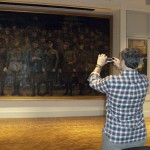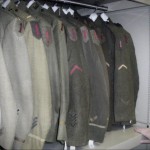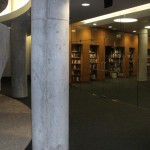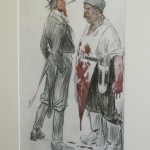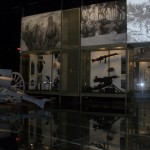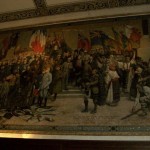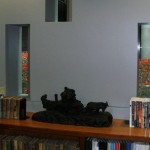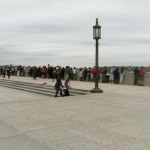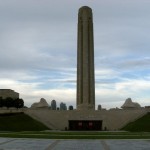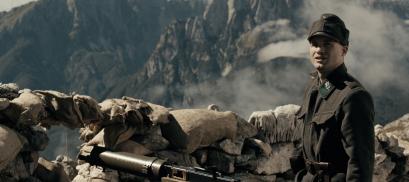The workshop I ran and the professional forum I helped lead at MW2015 earlier this month in Chicago went down very well with the enthusiastic participants.
What follows are photos (in a very low resolution) and some reflections on work done and some work to do.
Big Data
The conference for me began with “Chicago: City of Big Data” based around the work of the Chicago Architecture Foundation. This fired up questions of could the University of Oxford mine big data from sources like social media and the IoT (Internet of Things) for estate management and network management:
- Screenshot of Chicago: City of Big Datsa
- Exploring Chicago with iPads, looking at practical uses of big data and social media – and ducking into any building possible to escape the biting winds – even the sports bra dept.
- A 3-d visualisation with lighting of big data, e.g. total electricity consumption (red = heavy consumption), first workshop of the MW2015 conference in Chicago
- The voluntary guide – part of the big data workshop – on board the architecture river cruise boat, Chicago’s ‘First Lady’, kept saying “if you could see above your heads you would see the [INSERT NAME OF] tower!” Hypothermia-inducing but fascinating.
Workshop about the Oxford Community Collection Model:
The workshop I ran about crowdsourcing user-generated content (using the Oxford Community Collection Model to engage audiences and create collections) was based on the work I have done for years in shadowing Ylva, our best RunCoCo trainer, when we coach local teams to engage with their communities. The trick was to coalesce a 1-2 day coaching programme unique to every local nuance into less than 3 hours with a conference audience. With a lot of preparation I think I managed this, and the delegates really participated actively.
The 20-or-so delegates were representative of art galleries and museums from North America, Europe, and Australia, Canadian and American and British universities, as well as branding and software developers and artists from the US and the NL. The projects I learned more about included:
“Every Texan has a story. Share yours now!”
- The Story of Texas project
- The Yellow Star Houses project, from the Open Society Archives. Survivors of the Holocaust and former residents can tell their stories using an interactive map of Budapest
- Civil War in the Ozarks, “Community and Conflict: The Impact of the Civil War in the Ozarks, a collaborative digitization effort to document the war in the Trans-Mississippi theater”
- Missouri Over There exploring the state’s involvement in World War I, the project’s approach involving historians reminded me of Welsh Voice of the Great War who worked very closely with RunCoCo
- Uganda Heritage Sites and Stories from the York University Toronto with the Uganda National Museum in Kampala (YouTube trailer)
And after plugging the wonderful Nina Simon’s Participatory Museum I even learned of a monograph which I should’ve read years ago:
- JENKINS, Henry et al. Confronting the challenges of participatory culture: media education for the 21st century. Cambridge, M.A. 2009 [freely available as a downloadable PDF]
The slides (very low resolution) and all the links from the workshop are online on this blog.
Conference reflections:
The rest of the Museums and the Web conference passed swiftly by with art installations, receptions, and so many opportunities to network and build business relationships. In particular I was fortunate to meet drivers behind two very different proposals for the upcoming Horizon 2020 funding around European identity – both firmly technology bound but both seeing a real opportunity for engagement with communities, face-to-face or online – the Oxford Community Collection Model could be a key here.
Other opportunities were explored for work on prospective AHRC or ESRC bids, as well as just telling people about the freely-available resources from RunCoCo. I also met with a number of professionals who wanted to use crowdsourcing in their research or for their product – but without a clear idea of the benefit for the participant or even who could be interested in helping them. Hopefully my thoughts clarified their approaches to the crowd.
I attended a number of useful sessions (obviously most around crowdsourcing and social media, but some project management, product development, and photography as well). But two crowdsourcing panels in particular rang a chord:
“the foamers” (those niche amateurs)
From Crowdsourcing to Knowledge Communities:
Jon Voss of HistoryPin talked eloquently about their collaboration with communities (“Creating Meaningful Scholarship Through Digital Collaboration”), e.g. in history hackathons that bridge the generational gap, and which provide the curator with enriched metadata and thinking about what’s in it for the participant especially “the foamers” (those niche amateurs).
- This work requires a community officer to engage and encourage participation, and to help plan for and to collaborate with the community, i.e. not just mine the community
- HistoryPin are coming to the conclusion that 2 years is the bare minimum for measuring the success of such crowdsourcing initiatives
- Crowdsourcing can enable the curator to prioritise digitisation queues
All of this resonates with the findings of RunCoCo. Jon also showed off the new experimental Mapping emotions in Victorian London on HistoryPin, where the mechanical-Turkers appraisal of “happy” or “sad” is offered so much more nuance by the crowd of knowledgeable communities. Finally I was fascinated to hear about HistoryPin’s commitment to data sharing (or round tripping) e.g. to export metadata successfully into Europeana.
The school as the crowd:
Ally Davies and Rhiannon Looseley, Museum of London, reflected very openly on the challenges involving teachers, schools and school students in crowdsourcing (“adventures in crowdsourcing with schools”)for Tag London, e.g.:
Feedback from teachers included:
- students need an instant recognition like “correct – your tag is right”. This is not possible, the whole point of projects like Tag London is data (tags) is not available
- students won’t engage in this activity because it is not directly linked to exam results
- that the teacher wants a pre-filtered set of data for the students to tag, to fit with their term work on e.g. the Romans. Again this is impossible because the data is not ready for this.
“the students have become digital conscripts instead of volunteers!”
Most importantly, Ally and Rhiannon referred to the fuzzy warm feeling Mia Ridge talks about that the participant feels when choosing to do something worthwhile like helping the museums with their collections – and that this is removed when the school is involved – essentially the students have become digital conscripts instead of volunteers!
Click on an image for a closer look at pictures from the conference:
- One trick was to cope with the lack of fresh air and daylight and the opulent decor of the Palmer House venue, “look around the carpet, don’t look into the carpet, look around the carpet!”
- Alun Edwards explaining that RunCoCo’s story began with poetry…
- The decor of the lounge of the Palmer hotel!
- The audience gathers for our MW15 professional forum which we called “Wake up, America!” And there’s that carpet again!
Wake up America!
This was the professional forum I set up about Europeana 1914-1918 and RunCoCo with Bob Beatty of the American Association for State and Local History, and curators of museums about the First World War in the USA. I’ve blogged more [WATCH THIS SPACE!] about “Wake up, America! Can US museums use the Web to crowdsource user-generated content for the 2017-18 anniversaries using the new approaches piloted by the University of Oxford and made reality by Europeana?”
Some of a busman’s holiday looking for WW1 history in Mid-West USA:
Photo gallery from Scoville Park in Oak Park Illinois, the First Division Museum at Cantigny, the National World War I Museum at Liberty Memorial at Kansas City. Click on an image for a closer look at pictures from the tour:
- Scoville Park in Oak Park Illinois
- Scoville Park in Oak Park Illinois
- E.M. Hemingway on the memorial, Scoville Park in Oak Park Illinois
- Behind the scenes at the First Division Museum
- Behind the scenes at the First Division Museum
- Big Red 1, behind the scenes at the First Division Museum
- WW1-themed bedroom in my Kansas City hotel
- The base of the tower National World War I Museum at Liberty Memorial, Kansas City and the Edward Jones Research Centre
- Dutch artist Louis Raemaekers’ “Well, Have You Nearly Done?”, at the National World War I Museum at Liberty Memorial, Kansas City
- National World War I Museum at Liberty Memorial, Kansas City
- The Panthéon de la Guerre, in the Memory Hall, at the National World War I Museum at Liberty Memorial, Kansas City
- The 90,000 silk poppies art installation, viewed from inside the Edward Jones Research Centre, beneath the Paul Sunderland Glass Bridge at the National World War I Museum at Liberty Memorial, Kansas City. From this level you can really see the no man’s land is not flat and featureless
- A very busy museum, at the National World War I Museum at Liberty Memorial, Kansas City
- National World War I Museum at Liberty Memorial, Kansas City
Showing Europeana 1914-1918 to the Slovenian ambassador to the US
Lora Vogt of the National World War I Museum invited me down to Kansas City, what an opportunity! As well as meeting some of the decision-makers at the Museum I managed a few minutes rush around the galleries, pausing to note some of the excellent (if un-cited) uses of digital resources of our First World War Poetry Digital Archive. Also, I attended the reception and screening of Slovenian-Austrian film “Die Wälder sind noch grün” (“The Woods Are Still Green”). This evening was in honour of Bozo Cerar, Slovenia Ambassador to the US, and Barbara Koval Nelson, Honorary Consul for Slovenia in the Midwest. Fortunately, when I met Dr Cerar and talked about our work in over 20 countries I mentioned Europeana 1914-1918‘s days in Nova Gorica as he has family connections there. And of course I explained about one of the most extraordinary contributions made there of a family story from the First World War.
Thank you:
- Bob Beatty, American Association for State and Local History
- Bill Brewster, the First Division Museum at Cantigny
- Matt Naylor, the National World War I Museum at Liberty Memorial
- Ylva Berglund Prytz and all the Education Enhancement Team of Academic IT Services, University of Oxford
- Stacie Petersen, the National World War I Museum at Liberty Memorial
- Lora Vogt, the National World War I Museum at Liberty Memorial
Words and pictures by Alun Edwards.

